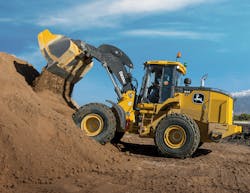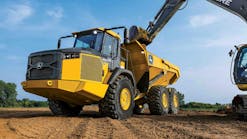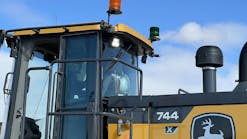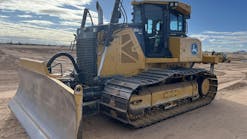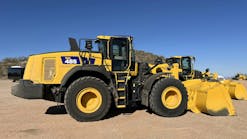Customer Need Drives John Deere's New Performance Tiering Systems
Many OEMs today are responding to customers who seek options in affordability, performance, efficiencies, and comfort in their machines, with system classifications designed to help them select the right equipment. The new approach offers customers greater choice when it comes to features and deciding what they really need.
“A trend that our product teams noticed when talking to customers was that they wanted more options to be able to stay profitable on their job sites,” says Luke Gribble, Solutions Marketing Manager for John Deere’s Construction & Forestry division. “There were needs on both ends of the spectrum.”
Last year at CONEXPO-CON/AGG 2020 John Deere announced its new Performance Tiering Strategy to give customers the flexibility on deciding which products were right for their specific situations.
“Some customers wanted more tech—features not found on a conventional machine. Others wanted a reliable solution that was more practical and didn’t necessarily have all the bells and whistles,” says Gribble. “Our goal was to put a strategy in place to give all our customers something that would meet their specific needs.”
The first John Deere machines branded with the new performance tiering system became available in January 2021.
Performance Tiers Explained
In general, there are three different equipment levels outlined under Deere’s Performance Tiering strategy. Each tier has different features, based on customer feedback and expected applications.
- G-tier: G-tier machines are rugged and reliable, and are designed for light- to medium-duty applications. Specifically, the 644 G-tier is ideal for loading trucks and hoppers, short-term load-and-carry tasks, and much more. It is also versatile—when properly equipped, it has the ability to change out buckets or forks that are compatible with K and L series machines. The 644 G-tier is currently available in Canada with future plans for it to be offered in additional countries.
- P-tier: P-tier machines are very similar to John Deere’s current product offerings across all product lines. The first products to transition to P-tier are Deere’s utility loaders, 444 through 724. These have enhanced features such as a more spacious and comfortable cab, EH joystick controls, and enhanced linkage designs to promote maximum productivity on a range of jobsites.
- X-tier: X-tier machines feature John Deere’s most innovative technologies, enabling even higher levels of productivity and efficiency. The 644 X-tier Loader, formerly known as the 644L Hybrid, is the first machine to be introduced in this tier. It is a great machine on nearly any jobsite, but it particularly shines in applications where changes of direction are very common; this is due to the diesel-electric drive train that enables regenerating and recapturing the energy from the machine. This makes it both environmentally and economically friendly due to lower fuel consumption, and also gives it class-leading productivity.
Gribble says that Deere internal field teams, as well as its dealer network, have been trained extensively to help customers determine which tier is a best fit. “We take a consultative approach to understanding what kind of work they’ll be doing. Will the operator be in the machine all day long? What is the expected utilization of the machine?” he explains.
Based on that information, a Performance Tier suited to the customer’s application and specific needs is recommended.
Machine Support
Regardless of tier, all machines come with John Deere’s Connected Support™ service, which is enabled by the JDLink™ telematics connection. John Deere Connected Support leverages a suite of tools, including Machine Monitoring, Expert Alerts, and Remote Programming and Diagnostics. Both Deere and the dealer can work with the customer to quickly identify critical issues and proactively address them should the JDLink data indicate an issue with a machine.
“It’s important to John Deere that we not only support our customers, but also meet their individual needs,” says Gribble. “The new Performance Tiering system is designed to do both—offering attractive options to existing customers and new ones alike.”
Gribble adds that other product categories will follow the Performance Tiering Strategy over time.
